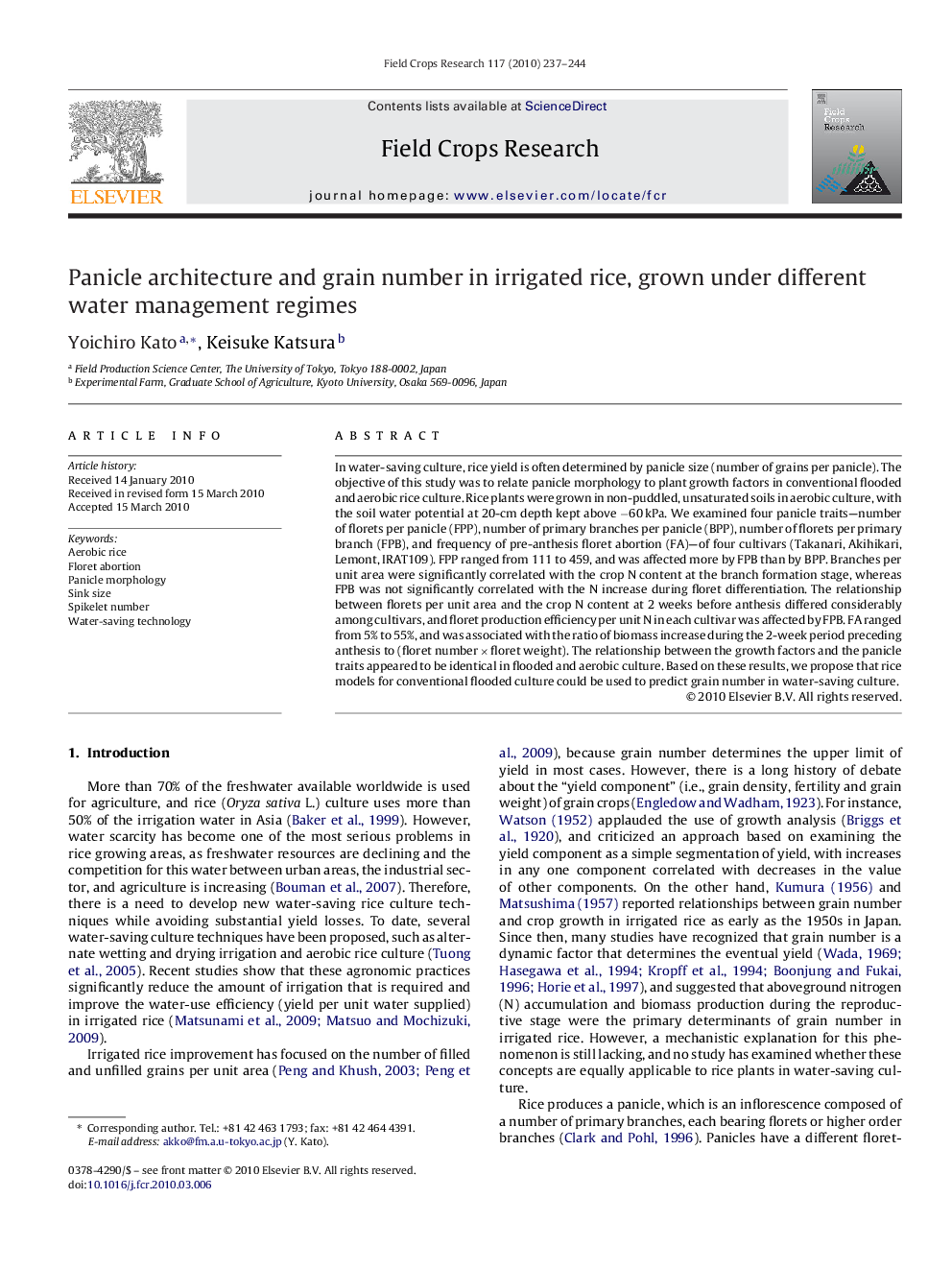| Article ID | Journal | Published Year | Pages | File Type |
|---|---|---|---|---|
| 4511134 | Field Crops Research | 2010 | 8 Pages |
In water-saving culture, rice yield is often determined by panicle size (number of grains per panicle). The objective of this study was to relate panicle morphology to plant growth factors in conventional flooded and aerobic rice culture. Rice plants were grown in non-puddled, unsaturated soils in aerobic culture, with the soil water potential at 20-cm depth kept above −60 kPa. We examined four panicle traits—number of florets per panicle (FPP), number of primary branches per panicle (BPP), number of florets per primary branch (FPB), and frequency of pre-anthesis floret abortion (FA)—of four cultivars (Takanari, Akihikari, Lemont, IRAT109). FPP ranged from 111 to 459, and was affected more by FPB than by BPP. Branches per unit area were significantly correlated with the crop N content at the branch formation stage, whereas FPB was not significantly correlated with the N increase during floret differentiation. The relationship between florets per unit area and the crop N content at 2 weeks before anthesis differed considerably among cultivars, and floret production efficiency per unit N in each cultivar was affected by FPB. FA ranged from 5% to 55%, and was associated with the ratio of biomass increase during the 2-week period preceding anthesis to (floret number × floret weight). The relationship between the growth factors and the panicle traits appeared to be identical in flooded and aerobic culture. Based on these results, we propose that rice models for conventional flooded culture could be used to predict grain number in water-saving culture.
